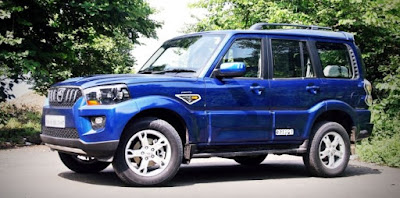To start with, Global NCAP is a renowned car safety watchdog that crash tests and rates cars according to United Nation's minimum crash test regulations. This is the agency's third round of testing Indian cars, with the previous rounds rating eight popular models on sale in India. Cars are slammed at a speed of 64 kmph with 40 percent overlap against a deformable barrier, which fairly reflects the possible real-life head-on crash situations. Although the tests conducted by GNCAP are not a part of our national safety regulations, they are definitely relevant as our current crash-safety rules are nowhere near global standards.
Mahindra Scorpio is the first large SUV from India tried by GNCAP so far; all other cars were hatchbacks and compacts. And significantly, this test has disproved the popular myth that bigger cars, especially SUVs, are relatively crashworthy and safe. The structural rigidity these cars are also hyped in the popular discourse. In case of Scorpio, the structural integrity of the bodyshell has been rated as 'unstable', which is quite apparent from the crash video footage. The roof section of the body shell collapses at impact and barges into the cabin, while the side fender along with the wheel and other mechanicals crumbles towards the the driver's boot area inside the cabin. This can potentially fracture his/ her legs (evident from the chart below), coupled with the crushed door and fender section, it would make an absolute mess for the driver to exit the car after the crash.
 |
| ADULT OCCUPANT PROTECTION - Mahindra Scorpio |
Absence of airbags, on the other hand, complicates the situation by causing heavy injuries to the driver's chest and head sections due to the proximity of the steering wheel and dashboard panels. Although Mahindra was quick to clarify that about 75 percent of Scorpios sold in the marker are airbag variants, the logic of the GNCAP is that they always test the base variants to assess the minimum level of safety in a car model. Personally, this logic is valid since it is always the non-airbag variants that are sold in majority in mass segments in India. Nor manufacturers offer airbag options in the lower trim levels.
Moreover, the presence of frontal airbag in case of Scorpio may have enhanced protection only to the upper section of the front row occupant's body, while the car's structural weaknesses could have still injured them owing to 'dangerous sections' of the dashboard. The front seatbelt pretensioners were missing either, while the side body/ knee impact or curtain airbags are not offered in any trims of the Scorpio range.
 |
| 2016 Mahindra Scorpio |
Also Read: Mahindra XUV 500: Hype and Reality
To sum up, the new Scorpio's age-old ladder-frame chassis and structurally weak body shell that has been carried over since the first generation Scorpios are obvious culprits for the car's poor crash safety. Lack of dual airbags and ABS as standard feature right from the base variant renders the SUV to secure poor minimal safety. For time being, Mahindra can salvage this crisis partly by withdrawing the non-airbag Scorpio models from the market and making ABS a basic feature, until a whole new next-generation Scorpio with upgraded chassis and structure is developed.
Next, would you like to read more on Mahindra, Scorpio, SUVs, or Car Safety ??
Photos Credit: Global NCAP, Freehdwal | Video Credit: Global NCAP
Photos Credit: Global NCAP, Freehdwal | Video Credit: Global NCAP


Comments
Post a Comment